#restful api development
Text
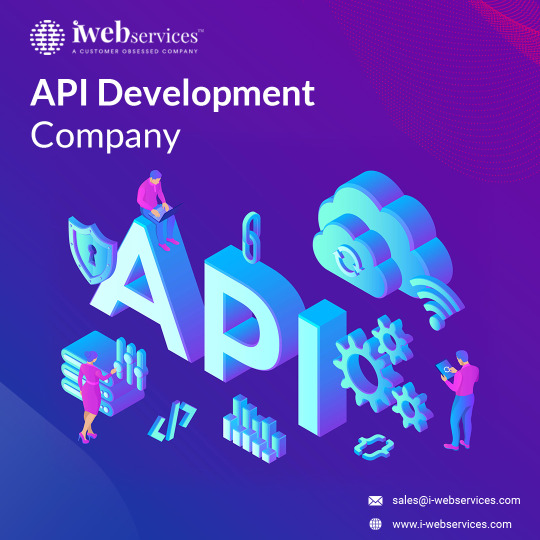
Are you trying to find ways to make your company better? If so, you might want to think about investing in API development services. Application programming interfaces, or APIs, are short for them. They enable programmers to link their programs to other networks or systems. By doing so, they can access data from multiple sources and incorporate it into their programs.
APIs are becoming increasingly important in today's digital age. They allow businesses to easily interact with customers and partners through mobile devices, websites, social media platforms, etc.
Source: 5 Reasons Businesses Should Invest In API Development Services
#api development company#api development services#rest api development company#web api development#custom api development#restful api development
0 notes
Text
What is Monolithic Architecture?
Monolithic architecture is an approach to software development in which an application is built as a single, self-contained unit. In this architecture, all application components are tightly coupled and run within the same process. This means that the entire application is deployed as a single package, and all changes to the application require the application to be rebuilt and redeployed.

In the above example, we can see that all services are created in a single application and they are tightly coupled with each other. Even functionalities created in separate classes, it is integrated into the main class. If the change in one class is done, we have to test all functionality. The bigger issue is that, if any class has an issue then it will impact all functionality. Let us example, the discount service has an issue so it will impact the complete order process.
Check out this post for the Advantages and Disadvantages of Monolithic Architecture?
#development#rest api#salesforce#salesforcecodex#salesforce development services#salesforce development company
2 notes
·
View notes
Text
Learn how to use API with 2 API examples

Are you interested in learning how to use APIs? No worries we will show you the complete API example in today’s article.
Read More: https://beproblemsolver.com/learn-how-to-use-api-with-2-api-examples/
#API#API Crud#API example#Bootstrap 5#CSS3#HTML5#JSON#json api example#postman api#rest api#Weather API#Web Development
2 notes
·
View notes
Text
Building REST APIs with Django and Django REST Framework
Introduction
RESTful APIs are essential for modern web applications, enabling seamless communication between the frontend and backend. Django REST Framework (DRF) is a powerful and flexible toolkit for building Web APIs in Django. In this guide, we’ll cover the basics of creating a REST API using Django and DRF, including setting up the project, creating models, serializers, and views, and…
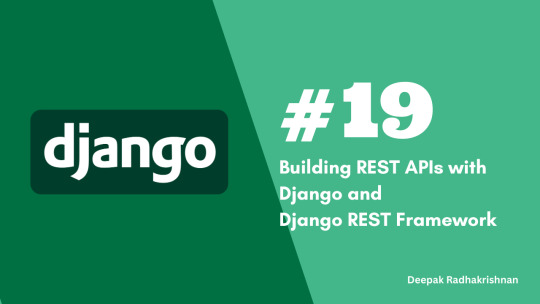
View On WordPress
0 notes
Text
Looking to elevate your web projects with ReactJS expertise? Our team of seasoned ReactJS developers is primed to deliver exceptional results. With a profound grasp of React's component-based architecture and state management, we craft dynamic, high-performance web applications that engage users. Whether it's creating interactive interfaces, building scalable frontends, or integrating React with existing systems, our developers excel at every stage of development. Committed to client satisfaction and delivering on time, we ensure your project's success. Contact us today at ☎ +1 9177322215 to discuss your needs and let us bring your vision to life. Don't miss out on the opportunity to collaborate with skilled ReactJS professionals dedicated to your success.
#ReactJS expertise#Frontend development#Component-based architecture#Virtual DOM#JSX (JavaScript XML)#State management (e.g.#Redux#MobX)#React Hooks#React Router#Context API#Single Page Applications (SPAs)#Responsive design#Cross-browser compatibility#Testing (e.g.#Jest#Enzyme)#RESTful API integration#GraphQL integration#Flux architecture#Performance optimization#Material-UI#Ant Design#Semantic UI React#Server-side rendering (SSR)#Next.js#Gatsby.js
0 notes
Text
Unlocking Business Success: The Importance of REST API in Your Project

In today's digital landscape, where connectivity and interoperability reign supreme, integrating a REST API (Representational State Transfer Application Programming Interface) into your business project is no longer just an option—it's a necessity. Whether you're developing a web application, mobile app, or any other software solution, leveraging RESTful APIs can unlock a multitude of benefits that are critical for achieving success in the competitive market.
Here are some compelling reasons why your business project needs a REST API:
Seamless Integration:
REST APIs provide a standardized way for different software systems to communicate with each other over the internet. By adhering to the principles of REST, such as stateless communication and resource-based URLs, RESTful APIs enable seamless integration between disparate systems, regardless of the technologies they are built with. This interoperability allows you to leverage existing services, data sources, and functionalities, saving time and resources while enriching your project's capabilities.
Enhanced Scalability:
One of the key advantages of REST APIs is their scalability. As your business grows and evolves, the demands placed on your application may increase exponentially. RESTful APIs are designed to handle these scalability challenges effortlessly, thanks to their stateless nature and lightweight architecture. By decoupling the client and server components and relying on HTTP protocols, REST APIs can efficiently scale to accommodate a growing user base, increased traffic, and evolving business requirements without sacrificing performance or reliability.
Improved Flexibility and Modularity:
RESTful APIs promote a modular approach to software development, allowing you to break down complex systems into smaller, more manageable components. Each resource exposed by the API represents a discrete unit of functionality, making it easier to update, extend, or replace individual features without impacting the rest of the system. This flexibility enables agile development practices, facilitates collaboration among development teams, and empowers you to adapt quickly to changing market conditions and customer feedback.
Cross-Platform Compatibility:
In today's multi-device world, delivering a seamless user experience across different platforms and devices is paramount. REST APIs enable you to achieve cross-platform compatibility by providing a uniform interface that can be accessed from any device with internet connectivity. Whether your users are accessing your application from a web browser, mobile app, or IoT device, they can interact with your services and data through a consistent set of API endpoints, ensuring a cohesive experience across all touchpoints.
Security and Control:
Security is a top priority for any business project, especially when dealing with sensitive data and transactions. REST APIs offer robust security mechanisms, including HTTPS encryption, authentication, and authorization, to safeguard your resources and protect against unauthorized access and malicious attacks. By centralizing access control and enforcing granular permissions at the API level, you can maintain strict security policies while granting controlled access to your application's functionalities.
Partnering with a specialized REST API development company is essential for maximizing the benefits of integrating a RESTful API into your business project. A reputable firm with expertise in API design, development, and integration can provide invaluable guidance, best practices, and tailored solutions to meet your specific requirements. Whether you're building a new application from scratch, enhancing an existing system, or migrating to a microservices architecture, collaborating with experienced professionals can ensure seamless integration, optimal performance, and future scalability.
In conclusion, incorporating a REST API into your business project is not just a technical decision—it's a strategic imperative. From enabling seamless integration and enhancing scalability to promoting flexibility and ensuring security, RESTful APIs play a crucial role in driving innovation, efficiency, and growth. By partnering with a leading REST API development company, you can harness the full potential of REST APIs and propel your project towards success in today's interconnected world.
0 notes
Text
Best Practices in Designing an Effective API
Designing well-established Interfaces
There is no software system in isolation. Software systems communicate with each other to request or response to some data. This is also called interoperability. Interoperability is the degree to which two or more systems can usefully exchange meaningful information via interfaces in a particular context.
Software systems can exchange this information in…
View On WordPress
#Ali Zeynalli#API#Java#Representational State Transfer (REST)#REST API Best Practices#Rest API Design#REST APIs#RESTful#Senior Developer#Software Architects
0 notes
Text
#Advantages for Companies that Develop Websites#api#APIs in Custom Development#APIs in Web Development#Representational State Transfer#RESTful#Role of APIs in Web Development#Simple Object Access Protocol#SOAP#web development#web development services#Webhooks
0 notes
Text
Custom REST API Development Solutions | Connect Infosoft
Connect Infosoft offers top-tier REST API development services, catering to diverse business needs. Our seasoned developers excel in crafting robust APIs that power web and mobile applications, ensuring seamless communication between various systems. We specialize in creating secure, scalable, and high-performance REST APIs that adhere to industry standards and best practices. Whether you need API development from scratch, API integration, or API maintenance services, we have the expertise to deliver tailored solutions. Trust Connect Infosoft for cutting-edge REST API development that enhances your digital ecosystem.
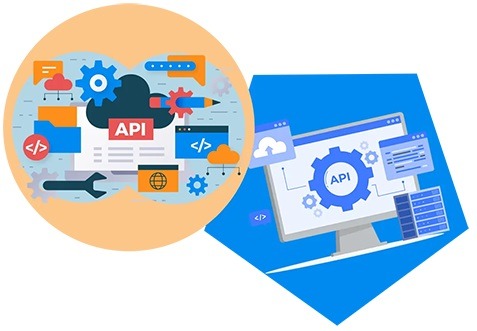
#REST API Development Services#Expert REST API Developers#RESTful API Solutions#Custom REST API Development#REST API Integration Services#REST API Security#Scalable RESTful Services#REST API Consulting#REST API Implementation#REST API Best Practices
0 notes
Text

A RESTful API (Representational State Transfer) is a web service architecture that follows a set of principles and constraints, aiming to simplify communication between systems. RESTful APIs use standard HTTP methods (GET, POST, PUT, DELETE) to perform operations on resources, which are identified by unique URIs (Uniform Resource Identifiers).
0 notes
Text
Nextbrain provides effective cloud-based back-ends with REST API development services to give better user experience catering to business needs.
0 notes
Text
Generate GraphQL Query In Salesforce Apex
GraphQL can retrieve data from multiple sources in a single query. This will reduce the number of HTTP requests, reducing latency and boosting performance, particularly in mobile and low-bandwidth devices. To retrieve data we have to create SQOL in GraphQL format. In this post, we will build a GraphQL Query Generator in Salesforce Apex that will give us a valid GraphQL query. We will also use generated SOQL to retrieve data using GraphQL API.
To explore GraphQL in Salesforce you can check our other post Exploring GraphQL API in Salesforce.
Steps to create a GraphQL query generator
Create Apex Classes for Query Generator
Use Generate GraphQL Query to retrieve data
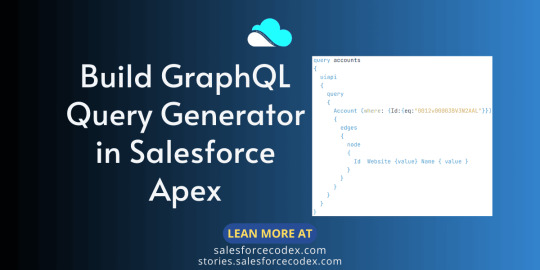
Check out post GraphQL Query Generator in Salesforce Apex to learn each step in detail.
#salesforce#salesforce development services#salesforce development company#development#salesforcecodex#rest api#graphql
0 notes
Text
Why to Use Graphql Explained with Example for API Developers
Full Video Link - https://youtube.com/shorts/hO2vbzF4cNk
Hi, a new #video on #graphql usage for #microservice #api #developers is published on #codeonedigest #youtube channel.
@java #java #awscloud @awscloud #aws @AWSCloudIndia #Cloud #CloudComp
GraphQL is a syntax for requesting data. It’s a query language for APIs. It lets you specify exactly what is needed, and then it fetches just that — nothing more, nothing less. GraphQL is the solutions to common REST issues like over fetching and multiple network request.
REST is an API design architecture that has become the norm for implementing web services. It uses HTTP to get data and…
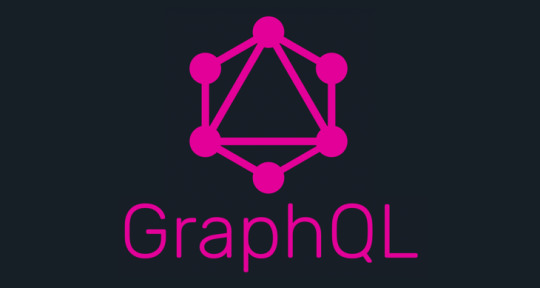
View On WordPress
#graphql#graphql api#graphql api calls#graphql api developers#graphql api java#graphql api platform#graphql api project#graphql developer#graphql example#graphql example api#graphql example java#graphql example spring boot#graphql example tutorial#graphql explained#graphql explained in 100 seconds#graphql tutorial#graphql use#graphql vs rest#rest api limitations#use graphql in nodejs#use graphql in postman#why graphql
0 notes
Text
In search of proficient React developers to bring your web projects to life? Look no further. Our team of seasoned React developers is adept at crafting dynamic and responsive user interfaces that captivate audiences. With a deep understanding of modern web technologies and best practices, we deliver solutions that not only meet but exceed expectations. Whether it's building single-page applications, e-commerce platforms, or complex web applications, our developers have the expertise to tackle any challenge. Contact us today at ☎ +1 9177322215 to discuss your requirements and let us help you elevate your web presence. Don't miss out on the opportunity to collaborate with skilled professionals committed to your success.
#React expertise#Frontend development#Component-based architecture#Virtual DOM#JSX (JavaScript XML)#State management (e.g.#Redux#MobX)#React Hooks#React Router#Context API#Server-side rendering (SSR)#Single Page Applications (SPAs)#Responsive design#Cross-platform development#Testing (e.g.#Jest#Enzyme)#GraphQL integration#RESTful API integration#Flux architecture#Performance optimization#Material-UI#Ant Design#Semantic UI React#React Native (for mobile app development)#Next.js (for SSR)#Gatsby.js (for static site generation)
0 notes
Text
youtube
#codeigniter4#codeigniter 4 tutorial in hindi#codeigniter#CodeIgniter 4 API Development#CodeIgniter 4 RESTful APIs Tutorial#Youtube
0 notes
Text
Unpacking Django's API Views: Choosing Between Generics and Viewsets

Generic API Views
Generic API views are built-in Django views that provide a simple way to handle common use cases for RESTful APIs. These views provide a lot of functionality out of the box, such as handling GET, POST, PUT, and DELETE requests, pagination, filtering, and sorting. This makes them an excellent choice for smaller projects with basic requirements.
Advantages of Generic API Views
Easy to use: Since they are built into Django, you don’t need to install any additional packages or libraries to use them.
Less code: Generic API views require less code than custom views, which can save you time and effort.
Consistent: Generic API views are built with a consistent interface, which can make it easier to learn and use them.
Disadvantages of Generic API Views
Limited flexibility: Generic API views are built to handle common use cases, so they may not be flexible enough to handle more complex requirements.
Limited customization: While you can customize generic API views to some extent, you may not be able to achieve the level of customization you need for your project.
Viewsets
Viewsets are another option for handling views in the Django REST framework. Viewsets are built on top of Django’s generic views and provide more functionality out of the box. Viewsets are a good choice for larger projects with complex requirements.
Advantages of Viewsets
More functionality: Viewsets provide more functionality than generic API views, including support for nested resources, multiple authentication schemes, and permissions.
More flexibility: Viewsets are more flexible than generic API views, making it easier to customize them to meet your specific requirements.
Reusability: Viewsets are designed to be reusable, so you can use the same viewset for multiple resources.
Disadvantages of Viewsets
More code: Viewsets require more code than generic API views, which can make them more time-consuming to develop.
Steeper learning curve: Viewsets are more complex than generic API views, so it may take longer to learn how to use them effectively.
Code Organization
Generic API Views: Simple to use and require less code than custom views. They are built with a consistent interface, making them easy to learn and use. Generic API views are a good choice for small projects with basic requirements.
Viewsets: Require more code than generic API views but provide more functionality out of the box. Viewsets are designed to be reusable, allowing the same viewset to be used for multiple resources. Viewsets are a good choice for larger projects that require more code organization and structure.
Reusability
Generic API Views: Limited reusability as they are designed to handle specific use cases. They may not be able to be reused across multiple resources.
Viewsets: Designed to be reusable, allowing the same viewset to be used for multiple resources. This makes them a good choice for projects that require a high level of code reusability.
When to Use Which?
So, when should you use generic API views and when should you use viewsets? Here are some general guidelines:
Use generic API views for small projects with basic requirements.
Use viewsets for larger projects with complex requirements that require more functionality and flexibility.
If you need to customize your views extensively, use viewsets.
If you need to reuse views for multiple resources, use viewsets.
If you need to handle nested resources, use viewsets.
Summary
In summary, viewsets provide more flexibility and customization options than generic API views, making them a good choice for larger and more complex projects. However, generic API views are simpler to use and require less code, making them a good choice for small projects with basic requirements. Viewsets also offer better code organization and reusability, allowing for the same viewset to be used across multiple resources.
Originally published by: Choosing Between Generics and Viewsets
0 notes